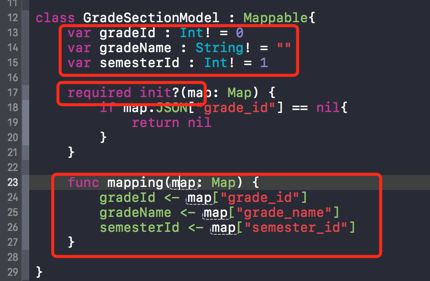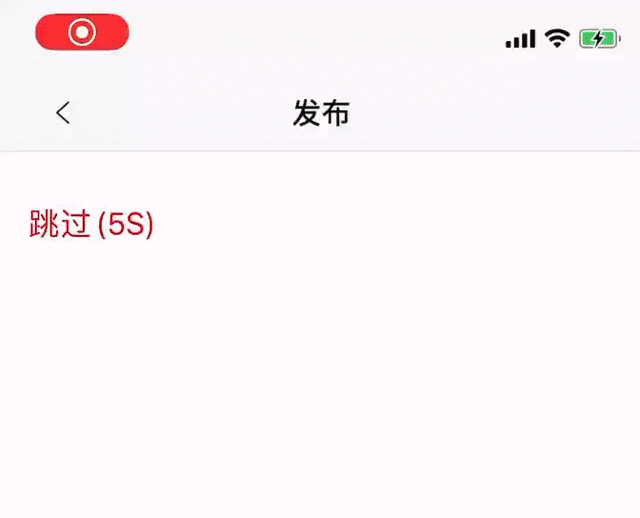协议(Protocol)
1、协议可以用来定义方法、属性、下标的声明,协议可以被枚举、结构体、类遵守(多个协议之间用逗号隔开)
protocol Drawable {
func draw()
var x: Int { get set }
var y: Int { get }
subscript(index: Int) -> Int { get set }
}2、协议中定义方法时不能有默认参数值
3、默认情况下,协议中定义的内容必须全部都实现
协议中的属性
1、协议中定义属性时必须用var关键字
2、实现协议时属性权限要不小于协议中定义的属性权限
协议定义get、set,用var存储属性或get、set计算属性去实现
协议定义get,用任何属性都可以实现
class Person: Drawable {
var x: Int = 0
let y: Int = 0
func draw() {
print("Person draw")
}
subscript(index: Int) -> Int {
set {}
get { index }
}
}class Person: Drawable {
var x: Int {
get { 0 }
set {}
}
var y: Int {
get { 0 }
}
func draw() {
print("Person draw")
}
subscript(index: Int) -> Int {
set {}
get { index }
}
}static、class
1、为了保证通用,协议中必须用static定义类型方法、类型属性、类型下标
protocol Drawable {
static func draw()
}
class Person1: Drawable {
class func draw() {
print("Person1 draw")
}
}
class Person2: Drawable {
static func draw() {
print("Person2 draw")
}
}mutating
1、只有将协议中的实例方法标记为mutating
才允许结构体、枚举的具体实现修改自身内存
类在实现方法时不用加mutating,枚举、结构体才需要加mutating
protocol Drawable {
mutating func draw()
}
class Size: Drawable {
var width: Int = 0
func draw() {
width = 10
}
}
static Point: Drawable {
var x: Int = 0
mutating func draw() {
x = 10
}
}init
1、协议里面还可以定义初始化器init
非final类实现时必须加上required
protocol Drawable {
init(x: Int, y: Int)
}
class Point: Drawable {
required init(x: Int, y: Int) {
}
}
final class Size: Drawable {
init(x: Int, y: Int) {
}
}2、如果从协议实现的初始化器,刚好是重写了父类的指定初始化器
那么这个初始化必须同时加required、override
protocol Liveable {
init(age: Int)
}
class Person {
init(age: Int) {}
}
class Student: Person, Liveable {
required override init(age: Int) {
super.init(age: age)
}
}init、init?、init!
1、协议中定义的init?、init!,可以用init、init?、init!去实现
2、协议中定义的init,可以用init、init!去实现
protocol Liveable {
init()
init?(age: Int)
init!(no: Int)
}
class Person: Liveable {
required init() {}
// required init!() {}
required init?(age: Int) {}
// required init!(age: Int) {}
// required init(age: Int) {}
required init!(no: Int) {}
// required init?(no: Int) {}
// required init(no: Int) {}
}协议的继承
1、一个协议可以继承其他协议
协议组合
1、协议组合,可以包含1个类类型(最多1个)
protocol Livable {}
protocol Runnable {}
class Person {}
//接收Person或者其子类的实例
func fn0(obj: Person) {}
//接收遵守Livable协议的实例
func fn1(obj: Livable) {}
//接收同时遵守Livable和Runnable协议的实例
func fn2(obj: Livable & Runnable) {}
//接收同时遵守Livable、Runnable协议,并且是Person或者其子类的实例
func fn3(obj: Person & Livable & Runnable) {}typealias RealPerson = Person & Livable & Runnable
func fn4(obj: RealPerson) {}CaseIterable
1、让枚举遵守CaseIterable协议,可以实现遍历枚举值
enum Season: CaseIterable {
case spring, summer, autumn, winter
}
let seasons = Season.allCases
print(seasons.count) // 4
for season in seasons {
print(season)
}CustomStringConvertible
1、遵守CustomStringConvertible协议,可以自定义实例的打印字符串
class Person: CustomStringConvertible {
var age: Int
var name: String
init(age: Int, name: String) {
self.age = age
self.name = name
}
var description: String {
"age = \(age), name = \(name)"
}
}
var p = Person(age: 10, name: "Jack")
print(p) // age = 10, name = Jack到此这篇关于Swift协议Protocol介绍的文章就介绍到这了,更多相关Swift Protocol内容请搜索好代码网以前的文章或继续浏览下面的相关文章希望大家以后多多支持好代码网!





